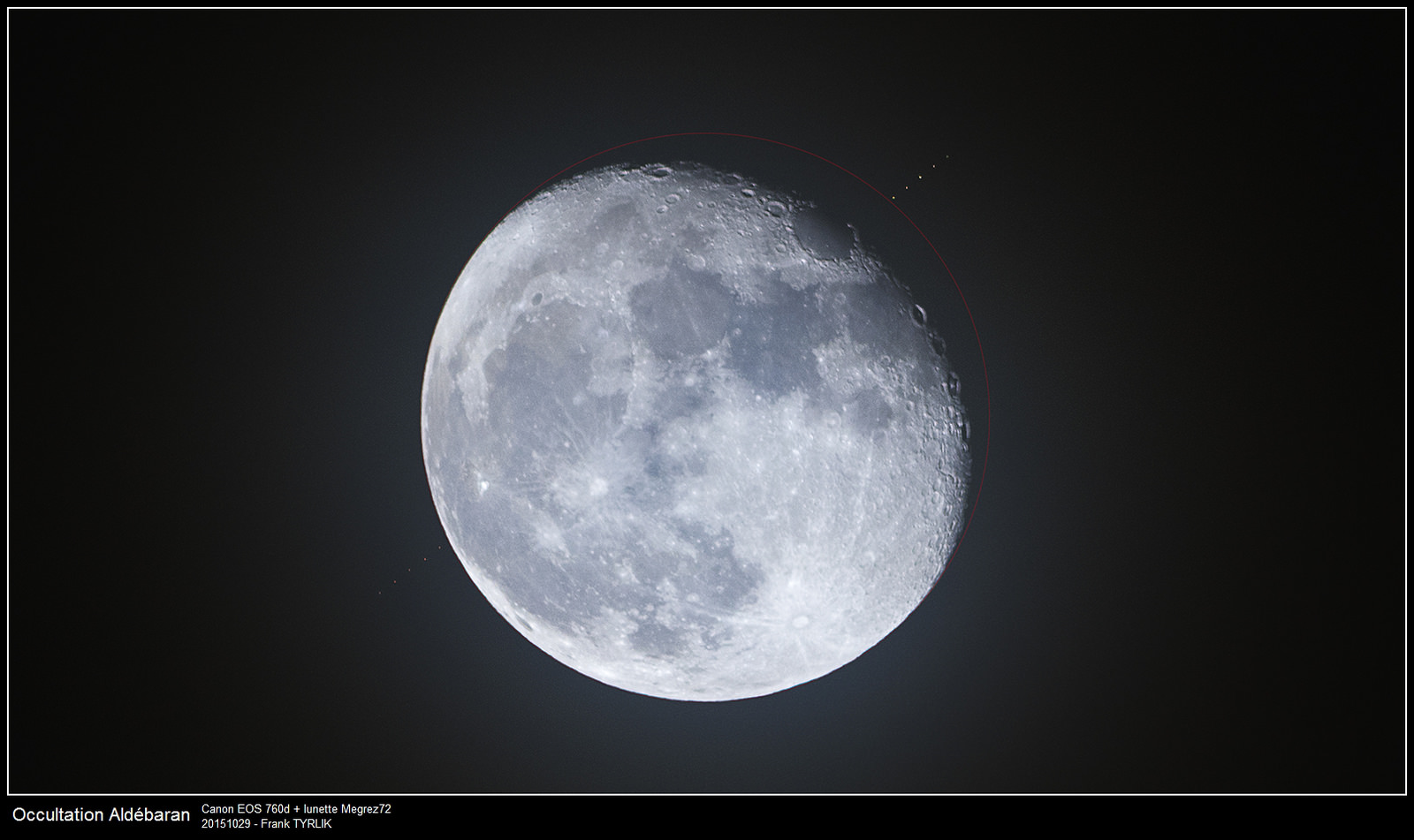“Once more, unto the breech…” Ready to brave the February cold and the ongoing arctic polar express? Tonight, North American skywatchers will witness an encore event, as the waxing gibbous Moon crosses the Hyades star cluster and – for a lucky few — occults the bright star Aldebaran.
This occultation is number 15 in a current series of 36 of Aldebaran by the Moon, running from January 29th, 2015 to September 12th, 2017. The Moon occults the bright star once for every lunation in 2016, though the event is only visible across a narrow footprint along the surface of the Earth. Tonight’s occultation sees the ‘shadow of the Moon’ cast by +0.9 magnitude Aldebaran cross a wide arc of the northern Pacific. In the United States, the graze line runs from around Seattle Washington to Salt Lake City Utah, down to around Phoenix Arizona. The western U.S. will witness the occultation in the early morning hours centered around 8:00 UT/1:00 AM MST, while Japan and the Far East will catch the event before sunset. The Aleutian Islands will see a spectacular graze of Aldebaran along the limb of the 61% illuminated Moon, low towards the southern horizon.
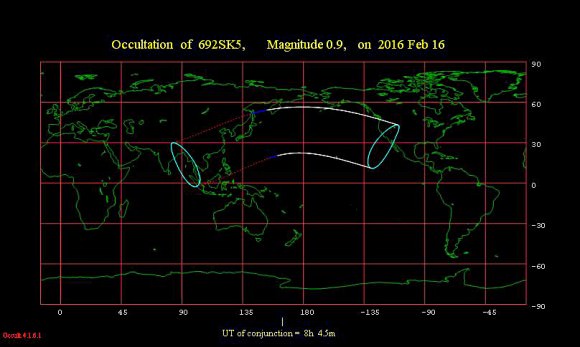
The rest of North America will see the Moon closing in on Aldebaran this evening just before moonset around 1 AM local. But don’t despair, the Moon occults lots of fainter stars as it traverses the Hyades, including +4th magnitude Gamma Tauri and the +3rd magnitude stars Theta Tauri^1 and ^2. Though Aldebaran lies in the direction of the Hyades star cluster, it’s actually 42% closer to the Earth at 65 light years distant. You can find a listing of timings for the ingress and egress for tonight’s event for selected major cities along the U.S. West Coast on the International Occultation Timing Association’s (IOTA) site for the event.
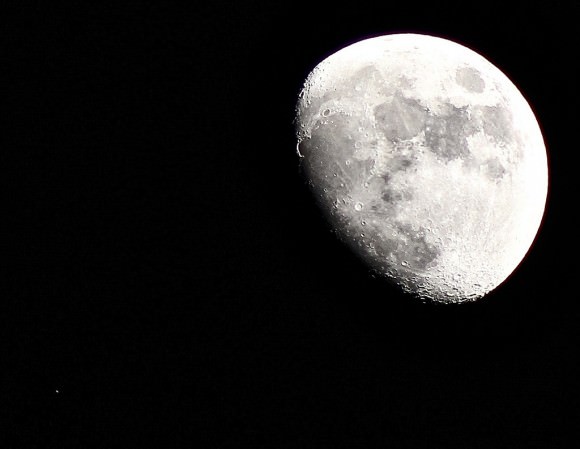
IOTA North American coordinator Brad Timerson just released a video compilation for the January 20th occultation of Aldebaran by the Moon:
In the current epoch, four bright stars lie in the path of the Moon: Regulus, Spica, Antares and Aldebaran. About two centuries ago, the Moon could also occult Pollux in the constellation Gemini as well. Lying about five degrees south of the ecliptic, the Moon frequently visits Aldebaran and the Hyades on ‘shallow years’ such as 2015 into 2016. This is also known as a minor lunar standstill. Hillier years, such as 2025, will see the orbit of the Moon steeply inclined versus the ecliptic, allowing it to visit the Pleiades star cluster once again. Sometime thousands of years in the far future, the 26,000 year cycle known as the Precession of the Equinoxes will carry the Moon’s path away from Aldebaran, and farther in time still, back towards it again.
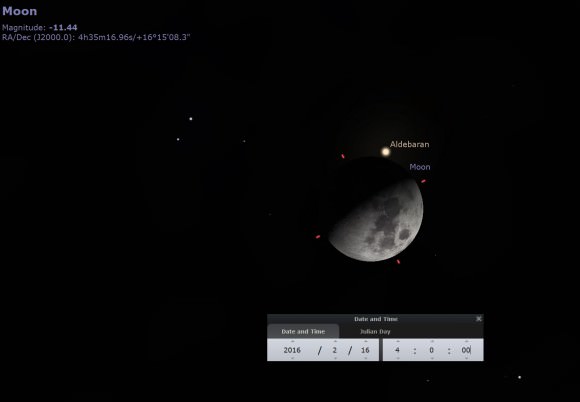
Aldebaran is most prominent during the ingress phase along the Moon’s leading dark limb. We even managed to see the star near the Moon with binoculars last month ten minutes before local sunset from Ormond Beach, Florida. The ‘wink out’ of a star during ingress is surprisingly swift, a rarity in astronomical observing, a pursuit where many events exceed mere human life spans.
Recording an occultation of a bright star by the Moon is as simple as coupling a video recorder to a telescope and recording the event at the appointed time. Aldebaran is bright enough to show up along the dark limb of the Moon even in a smartphone capture. Be sure to start setting up an hour or so early to get your tracking, focus and exposure settings right… just don’t drain those batteries out in the frigid air before showtime! The swiftness of an occultation also makes it a very appropriate event for that hip new short attention span platform, Vine.
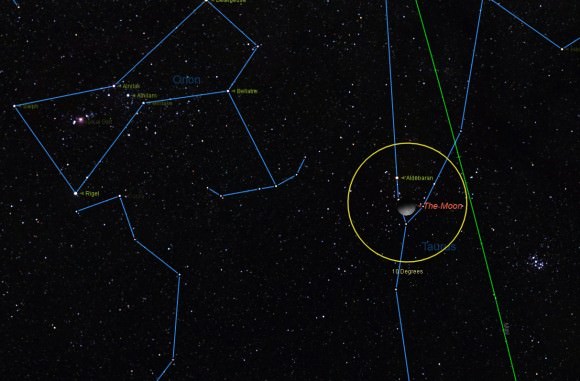
As well as being the closest open cluster to our solar system, the Hyades also have another important distinction: the large common proper motion of its members allowed astronomer Lewis Boss to trace their relative motion back to a converging point in space, a key early measurement of local galactic motion made just over a century ago in 1908.
Tonight’s sky provides a good study in the motion of all things, near and far. A good reason to brave the chill!

